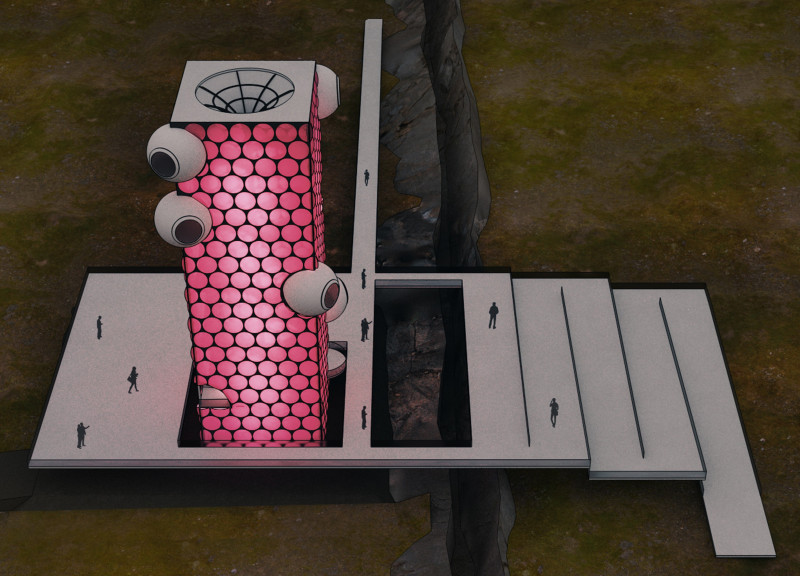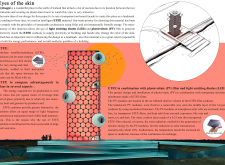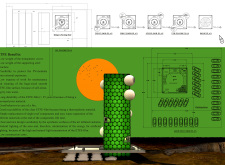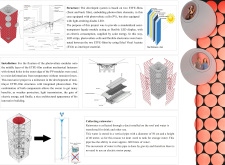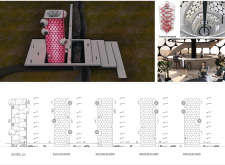5 key facts about this project
The design located in Grjótagjá, Iceland, explores the connection between the built environment and nature. The observation tower has a clear purpose: to enhance the scenic views of the geothermal landscape for visitors. The overall concept focuses on creating a space that invites contemplation while blending seamlessly into its surroundings.
Material Selection
Ethylene Tetrafluoroethylene (ETFE) serves as a primary material in the tower's construction. This lightweight polymer is known for its durability and transparency. The design employs air-filled cushions made from ETFE, forming a protective and luminous outer layer. These cushions allow natural light to flood the interior, fostering a sense of openness and connection with nature.
Energy Generation
Solar energy is harnessed through photovoltaic (PV) films integrated into the ETFE cushions. This feature generates renewable energy to meet the building's needs, supporting its functionality and sustainability. The use of light-emitting diodes (LED) in combination with the PV films adds another layer of versatility. The lights can change, offering different visual effects that enhance the experience throughout the day and night.
Water Management System
The design also includes a rainwater collection system. Rainwater is channeled into a storage unit that holds around 600 liters. This system allows for the reuse of water, which is vital for drinking and other uses. By incorporating rainwater management, the design promotes environmental responsibility and efficiency, reducing the need for external water sources.
Design Details
The construction process pays close attention to fastening techniques for the photovoltaic modules. Mechanical fasteners with slotted holes allow for adjustments due to temperature changes. This thoughtful detail ensures the stability of the structure while maintaining an uncluttered look. As light interacts with the ETFE cushions, the surface changes, creating a dynamic visual experience against the geothermal background of Grjótagjá.


